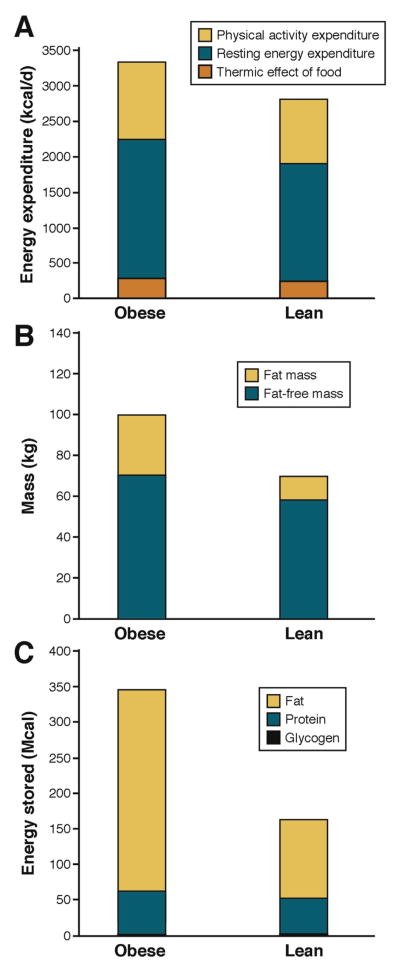Figure 1.
Components of human energy expenditure and body composition in average 100-kg and 70-kg men. (A) Daily energy expenditure comprises the energy cost of digesting and processing food, called the thermic effect of food, the energy expended in physical activity, and the energy expended at rest to maintain life. People with obesity have a higher thermic effect of food because of greater food intake. Furthermore, people with obesity may expend more energy for physical activity despite typically moving around less than a lean individual because physical activity expenditure is proportional to body weight. Energy expended at rest is also greater in people with obesity because they have more metabolically active fat-free mass in addition to greater body fat as depicted in (B). (C) Body fat represents the vast majority of energy stores in the body compared with the energy content of body protein and glycogen. People with obesity can have vast quantities of stored energy in the form of body fat that represents several months of energy expenditure.

